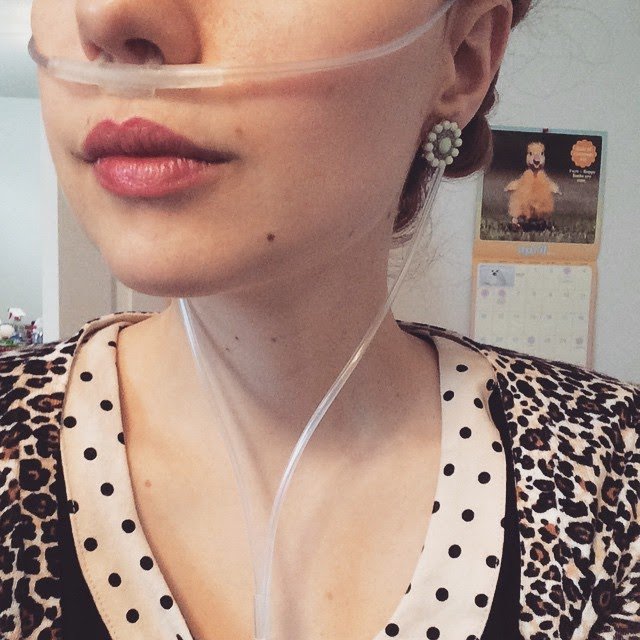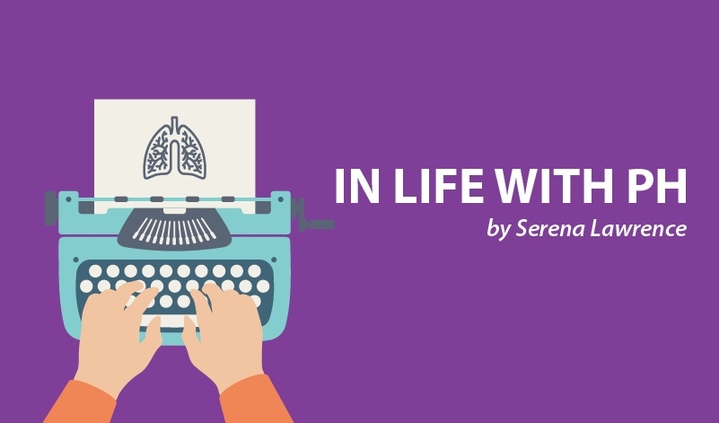Oxygen in Real Life, Part 2: News and Entertainment Media Need to Represent Us Better


Editor’s note: This column is in continuation of last week’s column entitled, “Oxygen in Real Life, Part 1: Young Adults Use Oxygen, Too.”
I’ve discovered that news and entertainment organizations either fail to write about rare diseases like pulmonary hypertension or portray them inaccurately.
When you’re living with PH, this can make you feel even more isolated, especially if you’re a young adult. News coverage has made me feel that few people have PH and that there are few people on oxygen I can look up to. Because the media rarely features either PH or the oxygen use associated with it, I have also felt that the world wouldn’t accept my diagnosis and disability.
As far as I know, no celebrity has the disease, advocates for PH causes, or uses oxygen. While some runway designers have hired models with disabilities, I have been unable to find one who uses oxygen. Same goes for companies such as Aerie and Dove that have embraced models of all shapes and sizes, but have yet to embrace an oxygen-using model.
The media’s pattern of ignoring PH and oxygen use has actually made me feel like something was wrong with me. It has made me struggle with my self-confidence and identity. I wondered: “Could I still be sick and beautiful?”
Oxygen representation in media
Emma Decody is a character on the TV series “Bates Motel.” She is a young adult with cystic fibrosis (CF). At one point she receives a double lung transplant.
The show’s portrayal of someone living with a life-threatening lung disease is unrealistic. Emma is able to run and climb mountains while on oxygen, barely needing to catch her breath or cough. Later she is able to get pregnant and give birth, which is considered risky for someone with a double lung transplant.
While “Bates Motel” did downplay some aspects of living with a serious lung disease, and requiring oxygen, I applaud the production team for creating an endearing character. Emma gave a face to young adults who use supplementary oxygen. Although she was sick, she was smart and well dressed.
There was more to her than just her oxygen tank, which can sometimes become a character itself.
Sometimes representation hurts
Theaters began showing “The Fault in Our Stars” several months after my PH diagnosis, around the same time that I tried to go back to work. Suddenly young girls at shopping malls would whisper “Hazel Grace” — the name of an oxygen-using character in the movie — behind my back. My boss said using oxygen would become popular because of the movie. Being compared with a terminally ill fictional character was probably the last thing I wanted to hear, however.
Love stories about terminal or life-threatening illnesses leave a bad taste in my mouth. “The Fault in Our Stars” was one of them.
Many of us with PH have complicated relationships due to the disease, or living on oxygen. Life-threatening illnesses that can require the use of oxygen and IV medications make dating and relationships harder. For some, romanticizing serious illnesses can be more hurtful than helpful because such portrayals are so far from reality.
While “The Fault in Our Stars” captured some of the raw emotions that people feel when they have a serious disease like PH and use oxygen, my take was that it sensationalized many of our hardships. We are so rarely represented in news and entertainment media. A love-story plot revolving around illness or disability can make us feel we’re not being represented in a realistic way.
Better representation
The way to generate more realistic portrayals of PH patients and oxygen users in entertainment media is for script writers to speak with real patients when creating characters, or for directors to hire talented people who have PH or use oxygen.
It is fine to show the struggles of people living with a disease or using oxygen, but it would also be a good idea to show someone with a disability doing normal things. While we want to be better represented in popular culture, it is important to remember that there is more to people than their diagnosis. We are interesting in our own right.
It is time to include oxygen users in body-positive campaigns. We exist, and we need to be part of these messages, too. Being body-positive shouldn’t be just about embracing different sizes. It should be embracing everyone, including people of different capabilities.
People who use oxygen, especially young adults, need better representation in society. Doing so will help normalize young patients’ use of oxygen, and show we can have somewhat normal lives, even in the face of adversity.
***
Note: Multiple Sclerosis News Today is strictly a news and information website about the disease. It does not provide medical advice, diagnosis, or treatment. This content is not intended to be a substitute for professional medical advice, diagnosis, or treatment. Always seek the advice of your physician or other qualified health provider with any questions you may have regarding a medical condition. Never disregard professional medical advice or delay in seeking it because of something you have read on this website. The opinions expressed in this column are not those of Multiple Sclerosis News Today, or its parent company, Bionews Services, and are intended to spark discussion about issues pertaining to multiple sclerosis.








Cheryl Lauer
Please look up Chloe Temtchine on YouTube. She is a singer with PH and strives to get our message out there.
Serena Lawrence
Very familiar with Chloe- she is very talented! However, I would love to see more of us represented, especially outside of just the PH community.
Fran Etzkorn
I am 77 yrs old and a clown. It hurts me a little when you refer to the young. Us older people also have feeling about how people respond to us. I work very hard at clowning as many as 50 times a year depending on my health. I have serve PH and Love life and try and share smiles and giggles were ever I can. I was diag. in 2009 and have used O2 since 2010 along with a pump for my meds. that I change every 48 hours. If I were RICH I would start an O2 company.
Serena Lawrence
Requiring oxygen and being diagnosed with pulmonary hypertension is extremely difficult for everyone. I was diagnosed at 25 a few years ago, so I wrote from my perspective of facing my own challenges with oxygen as a young adult.
Meredyth Phillips
I have the opposite opinion. At least as far as the PH news is concerned. The articles I read downplay having to be on oxygen and how hard it can be to live with day to day. The people I see either aren't on oxygen (especially 24/7) or it is addressed as a non problem. I am on oxygen 24/7 and a high flow required (6-7 Liters). Hauling around large O2 tanks is very difficult.
Serena Lawrence
Hi Meredyth,
One of our other columnists is a young adult who frequently requires oxygen. I myself needed it 24/7 for over a year after my diagnosis. Oxygen is a really challenging piece of medical equipment to require, and as you mentioned mention, it is difficult to haul around. This column specifically asks why we don't have better representation in the media.
Kelsey Williams
I was diagnosed at 17 with pulmonary arterial hypertension during my senior year of high school . I found out this year that a blood disorder was the cause of it. At first I didn't feel normal having to face the stuff I do. I have to use a pump 24/7 and it has to be changed every 48 hours. The line in my arm was the worse. I felt self-conscious about it. Now I have one in my chest and I embrace it.
Margaret Truckenmiller
I have a portable one for when I go out but because I use three liters the battery only last 45 minutes to one hour. I need it 24/7 and you get tired of staying home. The batteries are $300 to $500 dollars. I guess flying is out of the question.
Margaret Truckenmiller
No one gave an answer to my above comment.
Please do so
Serena Lawrence
Hi Margaret,
You would need to discuss whether you can fly with PH/oxygen with your doctor.
Cheryl Lauer
Margaret, yes, discuss this with your Doctor. I was on 2 lpm/3 lpm a few years ago, 65 yrs. old, and my Doc let me fly. Now I'm on 3 lpm/4 lpm at 68 yrs. of age and I can no longer fly. He says it's not even an issue of turning the oxygen up. So the upshot is, talk to your Doctor. As far as your portable, if you're really active and want to be out longer than an hour, I would go to tanks. At 3 - 4 lpm I get about 3 1/2 hours on 3. The "B" tanks weigh 4 lbs, and I carry 3 in my car, so I have a long time I can be out.
Margaret Truckenmiller
Thanks ate they the tanks you pull around?